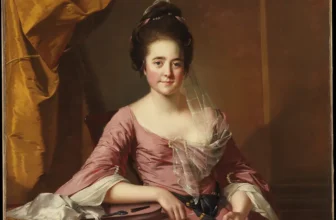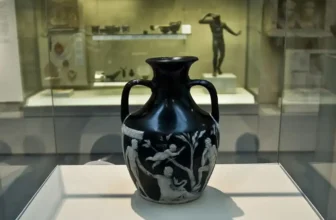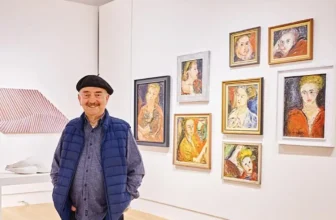How to Invest in Local Artists Before They Become Famous
The Hidden Goldmine in Local Art
When people talk about investment, they usually think of stocks, crypto, or real estate. But one of the most overlooked opportunities for long-term growth , both financial and cultural , lies in investing in local artists before they become famous. The art world has always rewarded early believers. Imagine owning an early Banksy, a pre-fame Basquiat, or an original piece from an emerging painter who later dominates galleries worldwide.
Unlike traditional assets, art investment allows you to participate in a creator’s journey, contribute to your local cultural ecosystem, and potentially see exponential value appreciation. However, spotting talent early requires a balance of passion, research, networking, and a bit of intuition. This guide will walk you through every step of investing wisely in emerging local artists , from identifying potential to protecting your investment.
Why Investing in Local Artists Matters
1. Supporting Your Community
When you buy from local artists, you do more than just acquire a painting or sculpture , you support the creative economy around you. Artists rely heavily on their local networks to survive and grow. By investing in them early, you help sustain their practice, fund new projects, and build stronger, more vibrant communities.
2. Affordable Entry into the Art Market
Art collecting often seems reserved for the wealthy, but local and emerging artists provide an accessible entry point. Instead of million-dollar auctions, you can find high-quality original work for hundreds , or even less. Over time, these investments can grow significantly if the artist gains recognition.
3. Emotional and Aesthetic Value
Unlike stocks or commodities, art offers emotional return. You live with it, enjoy it, and share it with others. Your collection becomes part of your identity and story. Even if the artist never becomes world-famous, the personal satisfaction of supporting local creativity is invaluable.
4. Potential for High Returns
The art world is full of stories where early collectors made fortunes from their eye for talent. While not every artist becomes the next Picasso, investing strategically in emerging talent can yield impressive appreciation over time.
How to Identify Promising Local Artists
The key to success is discovering talent before the rest of the world catches on. Here’s how to start.
1. Explore Local Art Scenes
Start by immersing yourself in your local art ecosystem:
Attend art fairs, open studios, and gallery openings.
Visit community arts centers and co-working spaces for artists.
Explore university art exhibitions where students showcase innovative works.
These spaces often reveal raw, authentic voices who are experimenting with form and concept before they’re commercialized.
2. Follow Art Schools and Residencies
Art schools are fertile grounds for future stars. Many world-renowned artists were discovered during or shortly after their academic years. Monitor art residencies and MFA programs , these often list their participants online, and many hold public showcases.
3. Use Social Media Strategically
Platforms like Instagram, TikTok, and Behance are modern talent incubators. Many artists gain exposure online before galleries notice them. Follow regional art hashtags (e.g., #LAartists, #BerlinArtScene, #NYCpainters) and pay attention to artists whose work shows:
Consistent quality and vision
A unique, recognizable style
Increasing engagement from other collectors and art pages
4. Look for Professionalism and Momentum
Talent is crucial, but so is professional growth. Promising artists usually:
Regularly produce new work
Participate in group shows
Have coherent themes or artistic philosophies
Engage actively with their audience
Artists who balance creativity with professionalism tend to rise faster in visibility and reputation.
Ways to Invest in Local Artists
1. Purchase Original Artworks
The most direct and traditional route is buying original works , paintings, sculptures, prints, or mixed-media pieces. This gives you full ownership and potential for future resale.
Tips for buying originals:
Ask for a certificate of authenticity.
Document your purchase (receipts, artist statements, exhibition history).
Understand the medium and preservation requirements.
2. Commission Custom Pieces
If you want something unique, commission a work directly from the artist. This not only strengthens your relationship but also gives you input on subject, size, or theme. Commissioning shows trust and often cements long-term collaborations.
3. Invest Through Art Collectives or Cooperatives
Many cities have art collectives, co-ops, and non-profits that support local artists. By becoming a member or sponsor, you can gain early access to new works, exhibitions, and private showings.
4. Support via NFTs and Digital Art Platforms
Digital art is transforming the investment landscape. Platforms like Foundation, SuperRare, or Objkt allow you to invest in local digital artists. You can verify ownership through blockchain and even earn resale royalties if the piece appreciates.
5. Fund Artist Projects or Residencies
Some investors support artists through micro-grants, residencies, or patronage programs. You provide funding in exchange for early access to works, exclusive editions, or partial ownership. This approach nurtures long-term relationships and artistic growth.
How to Evaluate an Emerging Artist’s Potential
You don’t need to be an art historian to make informed decisions. Here are practical evaluation criteria:
1. Artistic Consistency and Vision
Promising artists develop a distinct visual language. Look for consistency in tone, medium, and theme. A unique, evolving style often signals longevity and artistic maturity.
2. Critical Recognition and Exhibitions
Check if the artist has:
Participated in juried shows
Been featured in local press or art blogs
Earned residencies or grants
Been represented by galleries (even small ones)
These are strong indicators that others in the art world are taking notice.
3. Market Demand
Is the artist selling regularly? Are collectors or galleries showing interest? Consistent sales and waiting lists are signs of growing demand.
4. Engagement and Audience
Artists who actively build their audience , both online and offline , have a greater chance of long-term visibility. A strong, engaged following often translates into sustained demand for their work.
5. Long-Term Commitment
Ask yourself: does this artist treat their practice as a career or a hobby? Artists committed to full-time work, experimentation, and networking are statistically more likely to achieve success.
How to Protect and Grow Your Investment
1. Proper Documentation
Keep all receipts, provenance papers, and authenticity certificates. If the artist ever rises in value, these documents will be crucial for resale or insurance.
2. Insurance and Preservation
Protect physical works from damage. Invest in:
Proper framing
UV-resistant glass
Climate control for fragile media
Art insurance (especially for works valued above $1,000)
3. Network with Collectors and Galleries
Art value often depends on visibility and connections. Join collector circles, attend local auctions, and participate in gallery events. Building a reputation as a serious collector increases the credibility and resale value of your collection.
4. Display Strategically
Showcasing your collection , through online platforms, private tours, or exhibitions , helps raise awareness of the artists you support. The more exposure they receive, the more your pieces may appreciate.
5. Stay in Touch with the Artist
Maintain relationships. Attend their openings, share their work online, and celebrate their milestones. Your continued support may grant you early access to new works or exclusive editions , before prices rise.
Common Mistakes to Avoid When Investing in Local Artists
1. Buying Only for Trend
Avoid purchasing just because an artist is momentarily “hot.” True investment value lies in long-term vision, not short-lived hype.
2. Ignoring Authenticity
Never buy without a certificate of authenticity or proof of purchase directly from the artist or their representative.
3. Neglecting Research
Before buying, take time to understand the artist’s background, education, and style evolution. Informed decisions yield better results.
4. Overlooking Storage and Care
Art is fragile capital. Improper handling can ruin its condition and value. Learn basic conservation techniques or work with professional framers.
5. Expecting Quick Returns
Art investment is a long game. It can take years or decades for an artist to gain major recognition. Be patient and enjoy the journey.
The Role of Technology in Discovering Local Talent
Technology has revolutionized how we find and invest in art. Here’s how to leverage it:
1. Online Art Marketplaces
Websites like Saatchi Art, Artsy, and Singulart feature curated collections of emerging artists, including local ones. Many provide transparent pricing and authentication.
2. Social Media Analytics
Use tools to analyze engagement metrics. Artists with strong follower growth and high engagement rates often have expanding audiences , a good sign for future value.
3. Virtual Exhibitions
Post-pandemic, many galleries host virtual tours. You can attend from anywhere, expanding your local reach digitally.
4. Art Investment Platforms
New platforms allow fractional investment in art, where you can co-own high-value works. While focused on famous artists, some startups are extending this model to emerging talent.
Tax Benefits and Legal Considerations
Investing in art comes with certain tax implications:
In many countries, you can classify art as a collectible asset.
Selling at a profit may incur capital gains tax.
Donations to museums or nonprofits may qualify for tax deductions.
Keep documentation for provenance and purchase history.
Always consult a tax professional or art advisor familiar with local laws to ensure compliance.
Building a Long-Term Art Investment Strategy
Start Small and Diversify – Begin with a few affordable works across different mediums and artists.
Track Market Trends – Follow auction reports and local gallery sales to gauge emerging demand.
Develop Expertise – Study art history, attend lectures, or take online art investment courses.
Network Continuously – Relationships are currency in the art world.
Reinvest Profits – When you sell a work at a gain, reinvest in new local talent to sustain your portfolio.
Real-World Example: The Rise of Local Stars
Consider the case of a small-town photographer who started exhibiting at community fairs. Early collectors purchased prints for under $100. Within five years, those works sold at regional galleries for ten times their original price.
The collectors who supported the artist early not only profited financially but also gained credibility as early supporters of local culture.
Stories like this are increasingly common as social media amplifies exposure for regional artists. The key is to act early and invest thoughtfully.
Be a Patron of the Future
Investing in local artists before they become famous is about more than profit , it’s about participating in cultural creation. When you recognize and support emerging talent, you help shape the artistic legacy of your community. Financial returns are a welcome bonus, but the real reward lies in being part of an artist’s journey from local shows to global recognition.
Start small, stay curious, and let your collection reflect your belief in creativity and human expression. Because the next world-renowned artist might just be painting two blocks away , and your early investment could be the spark that helps them rise.




